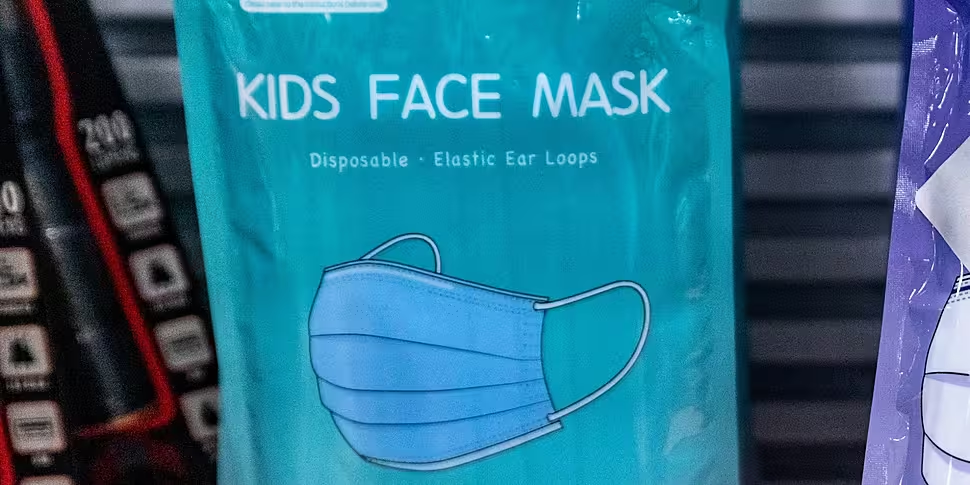Face masks should be required for primary school pupils when they return to class, according to the Independent Scientific Advisory Group.
So far, only secondary school students have been required to wear face coverings in school.
Health officials have previously advised against requiring face masks for younger children - citing concerns such as the impact on the development of their communication and language skills.
However, ISAG suggests mass COVID-19 infection of unvaccinated children will occur if action isn’t taken - particularly with the Delta variant now dominant in Ireland.
They say "properly fitting FFP2 [filtering facepiece] masks should be worn by all children and supplied by the Department of Education".
As well as mask-wearing, they’re calling for other measures such as permanent CO2 monitors in every classroom and improved ventilation practices.
They say such risk-mitigation measures can be achieved at a modest cost, especially compared to the cost of a child experiencing long COVID or other serious impacts from the virus.
Simone George is a human rights lawyer and a member of ISAG, and she spoke to Lunchtime Live.
She said: “I don’t understand how a very basic, easy to use public health measure wouldn’t apply to the most vulnerable people in our society.
“We know Delta is a different beast altogether from the previous variants, and that indoors in buildings with people packed closely together is where this exponentially growing virus spreads.
“Why wouldn’t we extend this life-saving and health-saving measure to children?”
One common argument against masks in younger children is that they may not wear the face coverings properly, impacting their efficacy.
However, Ms George says many common health and safety measures have “some error rate”, but we still use them.
She said: “The other side of not using those protective measures is a huge individual cost, and a cost to society.”
She also believes children can be taught how to put on a mask correctly.
ISAG is also calling for the likes of air purifiers to be installed in classrooms, arguing that the Department of Education should have focused on doing so this summer.
However, Ms George says “relatively cheap, low-tech” technology is now widely available - so there are ventilation options available to schools and parents if officials won’t step in.
The Department of Education has pledged that CO2 monitors will be available to schools, although ISAG says it’s not yet clear if those will be installed in every classroom.
In an update last month, the Department said they’d be distributing “between 2 and 20 [monitors] at primary level and between 20 and 35 at post-primary level depending on school size”.
The Department has also issued updated guidelines for good ventilation practices in schools, amid growing scientific consensus around the importance of good ventilation in curbing COVID-19 transmission.









